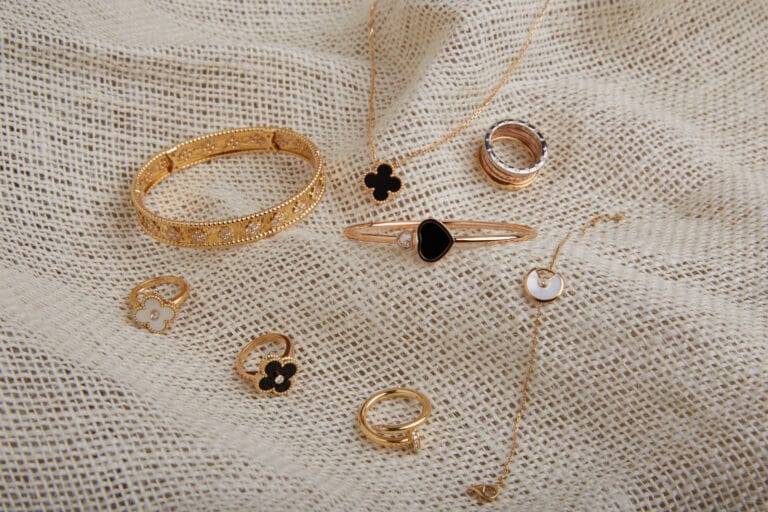Jewelry is usually a family heirloom, or it has had a great value for several years, that is why it requires proper care. In the same way that someone would treasure a piece of jewelry for one generation and passed down to another, how to care for antique Jewelry help in keeping the jewelry good as new for the next person to use it. Read this article to learn about best practices observed by experts before cleaning or storing your valuable antique jewels. If all the guidelines are followed you have the option to preserve these valuable pieces for generations to come.
The Aspects That Requiring Extra Care in Antique Jewellery
Working with aged materials, antique pieces of jewelry can be much more fragile, or made of metals that will corrode or simply wear away with time. It’s important to understand its needs to have precious pieces and items kept in good state and functioning in a proper manner. In contrast with today’s jewelry they may be made of less hardy metals or sensitive gemstones and should be worked on carefully.
1. Cleaning Your Antique Jewelry Needs To Be Done Right
The preliminary aspect to learning about how to care for antique jewelry is proper cleaning techniques. Vinegar and baking soda have a gentle action and will not scratch delicate surfaces so use them. Here’s a simple, safe cleaning method:
- Use Mild Soap: In warm water, dilute one drop of a mild soap.
- Soft Brush: Use light pressure with the brush especially in complicated regions of the body.
- Rinse and Pat Dry: Rinse with water after that wipe it dry with a piece of clean cloth that does not have any lint on it.
This process helps eliminate chance of getting scratches, and to top it up, it also helps in avoiding tarnishing thus making your jewelry pieces stay bright.
Storage Tips for Your Setting Your Antique Jewelry
People do not properly store antiques, and as such, the pieces end up breaking. To preserve their quality:
Separate Storage: Store each item in a SMALL CLOTH BAG OR JEWELLERY CASE WHICH HAVE SEPARATE COMPARTMENTS.
Avoid Humidity: KEEP IN A DRY DARK ENVIRONMENT TO AVOID CANDY MOISTURE DAMGE AND TARNISHING.
Anti-Tarnish Strips: It is fair to use anti-tarnish strips to maintain the condition of the metal pieces.
This avoids; rubbing ,entanglement and corrosion especially for fragile precious metals and stones.
Avoid Exposure to Chemicals
Solvents represent one of the most common hazards to wearing antique jewelry. The chemicals found in such common use products as perfumes, baby lotions, and cleaning agents are predisposed to erode or at least weaken the jewelry.
- Apply Products First: Bath creams and other perfumes should be applied before wearing any piece of jewelry.
- Remove for Cleaning: Remove your jewelry during any household activities or when you are swimming.
- Wipe After Wearing: Cleaning your jewelry should be done very softly after every use, especially to ensure that you have removed all the chemicals that could be on the jewelry piece.
If you avoid comingling your pieces with other chemicals, then they will keep their luster for longer.
4. Ways and Symptoms:
It is very important to schedule frequent checks and cleaning on the parts involved in materials handling:
This wear and tear is normal for most jewelry, diamond and antique in particular. Such scenarios should be checked frequently lest minor problems compound and cause severe problems.
- Inspect Closures and Prongs: Assure oneself that clasps, settings and prongs are well fixed and positioned.
- Seek Professional Help: It is recommended to take your jewelry to jeweler for an annual check up to identify any concealed problems.
- Avoid DIY Repairs: Do not attempt restoration of antique jewelries on your own because most of the times, it can ruin the jewelry; always consult a professional.
- It will help you ensure that you do not damage your artworks, and that your jewelry and other articles of art remain wearable.
5. Care done While Dealing with Antique Jewelry
Historical jewelry is more delicate than today’s jewelry because it as imperative to handle it gently.
- Gentle Wear: Do not wear antique rings or bracelets going by the belief that you use your hands for most tasks.
- Avoid Sunlight Exposure: The effects of light must also be avoided and while sun is good for tanning it can fade away the Gems.
- Mind the Weight: Chains and particularly those on pendant necklaces put pressure on nearby body parts and parts of clothing; they must, therefore, be worn with support.
Non-aggressive maintenance allows sustaining the proper shape and appearance of the antiques you possess.
The Repair and Restoration of Old and Vintage Jewellery
This is the fact that the jewelry that had been in use many years back may often be tarnished. But, the use of such practices should be restricted to infrequent occasions or occasional practices of work pieces.
- Avoid Over-Polishing: It also indicated that polishing a surface can reduce the thickness of the material being polished and reduce the quality of the features carved into the surface.
- Use a Soft Cloth: Gently wipe it off with microfiber or jewelry cloth.
- Seek a Professional: On pieces that require a bit more attention, it is possible to have them restored by a jewelry specialist.
- Polishing can be done sometimes to increase beauty instead of ruining the jewelry since the coral gemstones are of good quality.
Conclusion
Evaluating the measures needed to maintain antique jewelry it is important to know that it requires only simple and consistent steps. Thereby, when washing, folding and handling the vintage items, potential damage is averted since most chemicals are damaging to the skins of the textiles. These pieces are preserved by regular inspections and professional cares to enable their passing from generation to another in good shape and perfect looks. So, next time you’ll learn how to properly care for your antique jewelry, your collection will remain a source of timeless beauty.

